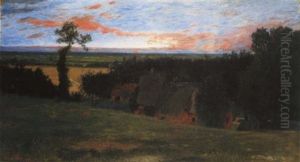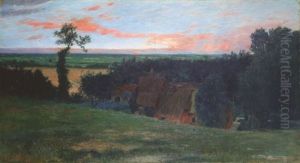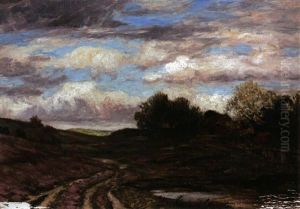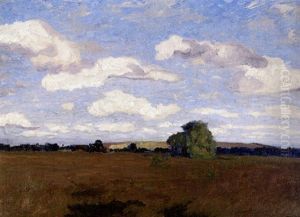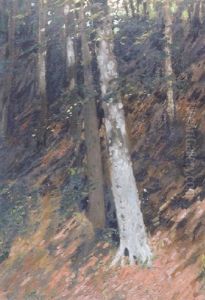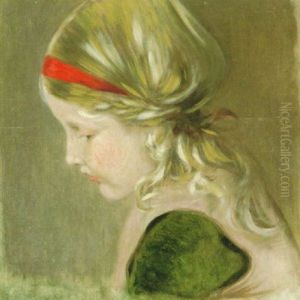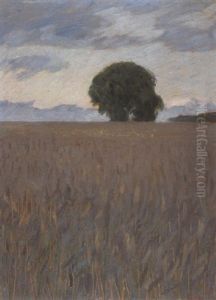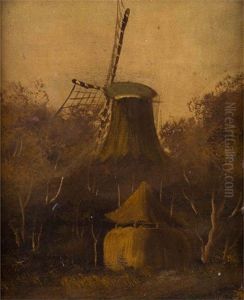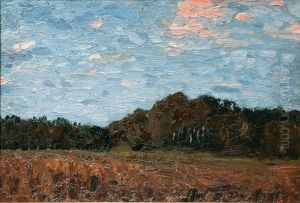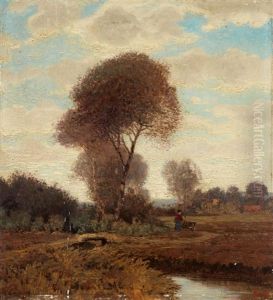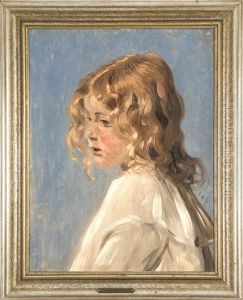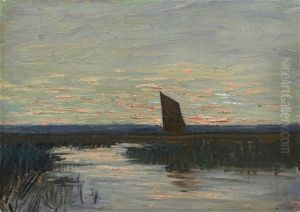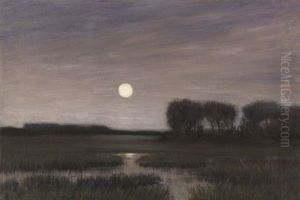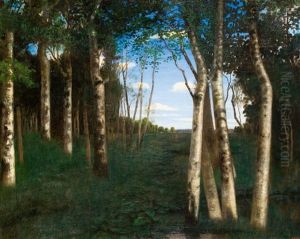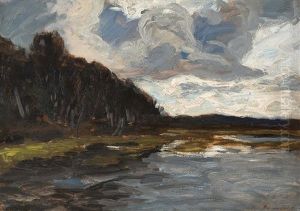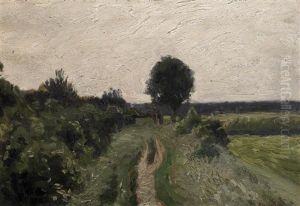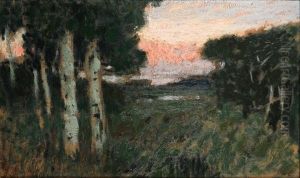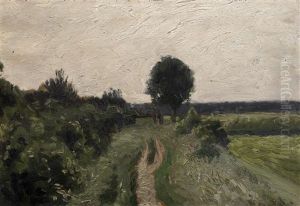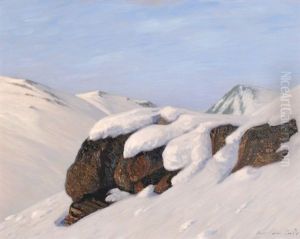Hans am Ende Paintings
Hans am Ende was a German Impressionist painter and one of the founders of the artist colony in Worpswede, Germany. Born on December 31, 1864, in Trier, he began his artistic education at the Düsseldorf Academy of Arts in 1883, where he studied under Eugen Dücker, a landscape painter. Am Ende was not satisfied with the academic approach to art teaching and sought a more natural and individualistic expression through painting.
In 1889, he joined the Worpswede artist colony, which had been founded by Fritz Mackensen. The colony was known for its landscape painting, and am Ende quickly became an integral part of the group, which included other notable artists such as Otto Modersohn and Paula Modersohn-Becker. The artists were drawn to the simplicity and beauty of the northern German landscape, and they sought to capture its essence through a direct and emotive style, which was influenced by French Impressionism.
Am Ende's work is characterized by his use of light and color to depict the marshes, heath, and peasant life of the Worpswede region. He typically painted en plein air, working outside to directly capture the effects of light on the landscape. His paintings often exhibit a strong sense of atmosphere and mood, evoking the unique qualities of the northern German countryside.
During his career, Hans am Ende exhibited his work widely and received recognition for his contributions to German Impressionism. However, his life was cut short by the outbreak of World War I. He served as a soldier and suffered from the effects of gas warfare. Hans am Ende died on July 9, 1918, in Stettin (now Szczecin, Poland), leaving behind a legacy as one of the important figures of the Worpswede artist colony and a proponent of the Impressionist movement in Germany.





